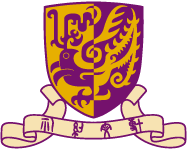Unified satellite image fusion for sustainable urban environment
Prof. HUANG Bo
The recent decades have witnessed the launch of a large number of orbiting satellite sensors with different spatial, temporal, spectral, and angular (STSA) characteristics, resulting in dramatic improvements in the ability to acquire images of the Earth surface, and a boom in remote sensing (RS) applications in environmental, ecological, and disaster monitoring. However, current RS technology cannot meet the requirement of monitoring dense and dynamic urban environments with complex structures and changes that require high spatial detail, frequent coverage, fine spectral resolution, and multi-angle observation. This is largely due to the fact that there is no satellite sensor that can achieve simultaneously high STSA resolution. Current satellite RS systems compromise between spatial resolution and spectral, temporal and angular resolution, which significantly limits the applications of RS data.
Under the support of Hong Kong RGC/GRF, Professor Huang Bo capitalized on the latest deep learning models to achieve high resolution with respect to all the image properties. The generated high STSA resolution imagery greatly contributed to the exploration and improvement of existing satellite image resources for urban environmental applications by detecting more details in a more accurate manner. Various environmental variables such as land surface temperature, aerosol optical depth (AOD), and PM 2.5/PM 10 that can only be obtained currently in a few stations and in low spatial details were made available through retrieval from the high STSA resolution satellite images. This technology provided an efficient alternative to monitoring Hong Kong’s land, air, and water quality and the public can benefit from this technology by accessing environmental data of any place in the territory.

